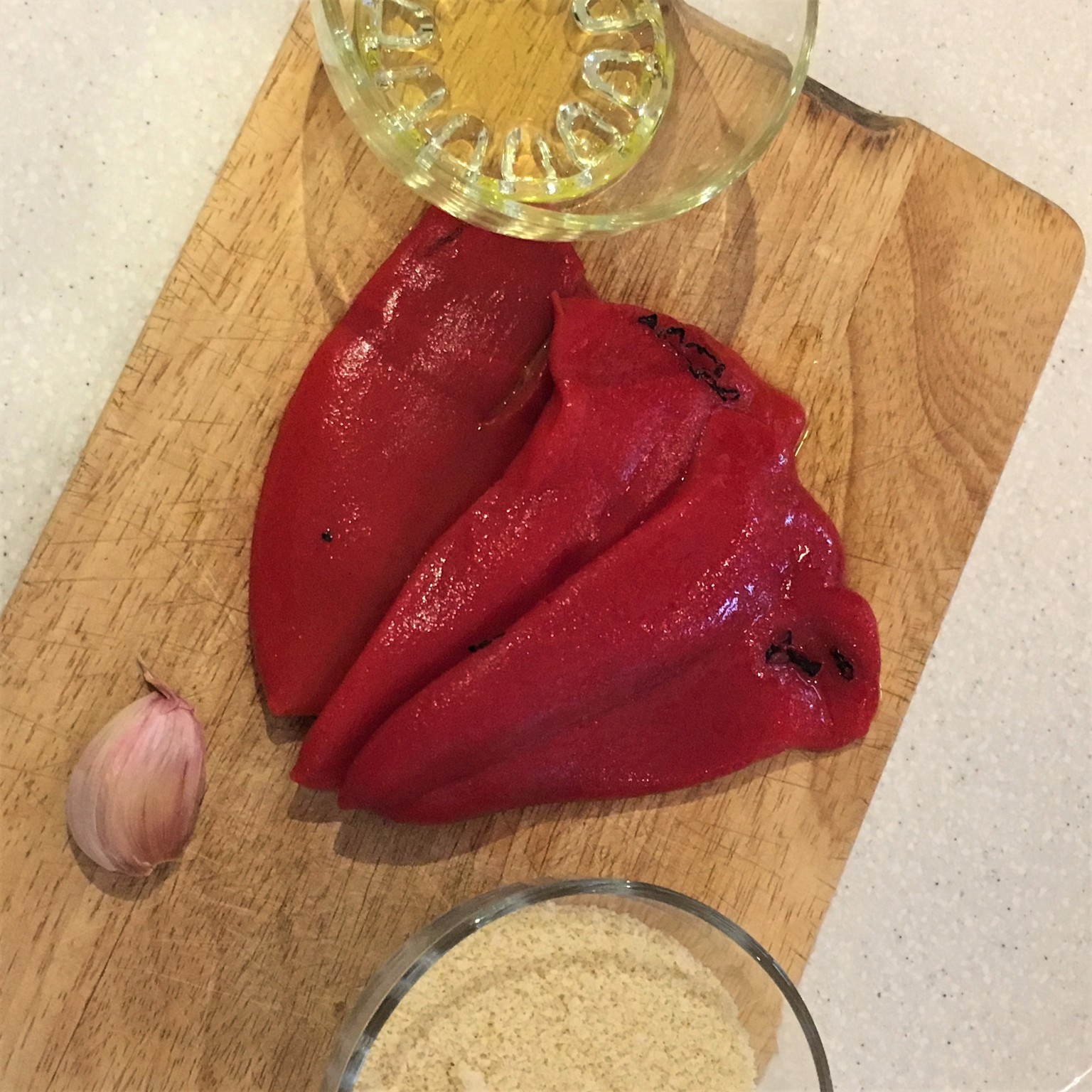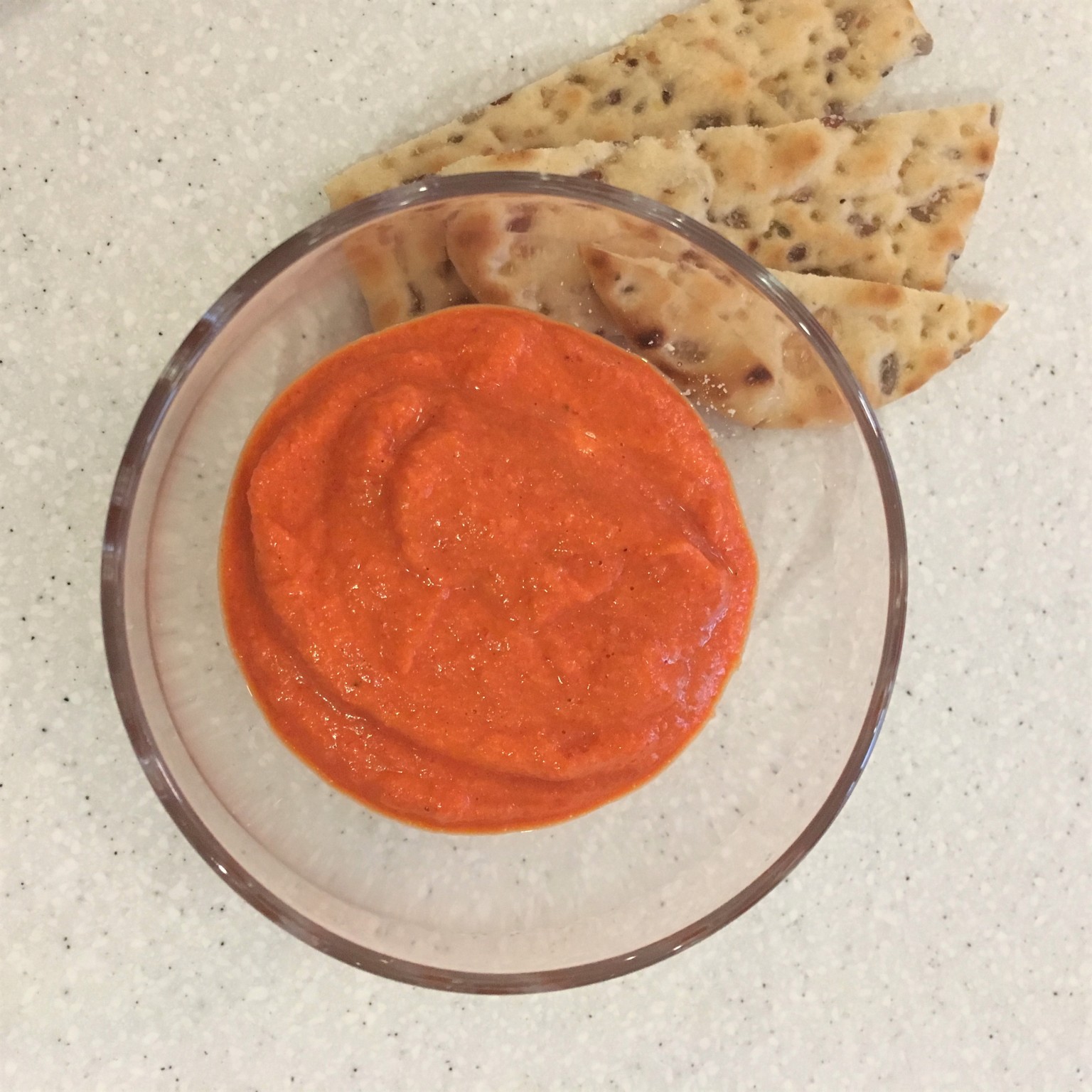Sunday 21st May - Yin Yoga, Seva and Red Pepper Dip
A Bit About... Yin Yoga
This past week I've been on a 5 day training course learning about Yin Yoga. There are so many different types of yoga on offer nowadays and it can all get a little confusing so I thought I'd give you the lowdown on this style so that if you come across it you'll know what it is.
Let's start with the name: you might already know about yin and yang, or at least have seen the symbol before - a circle containing a black teardrop shape connected with a white teardrop shape. Yin is the black side (it is dark, moonlight, soft, feminine energy) and Yang is the white side (light, sunlight, strong, masculine energy) and they are inseparable and inter-connected. There is a small dot of white in the black side and a small dot of black in the white, symbolising that there is always some light within the dark and some dark within the light. Both of these energies are necessary - they balance each other out - and where there is balance there is clarity, awareness and flow. So this gives us a clue to the nature of Yin Yoga - it is a quieter, softer, more passive form of yoga than many of the other active styles, and it focusses on stretching rather than strengthening.
It is a relatively new style of yoga, being formed within the last 30 years or so, initially by a martial arts practitioner called Paulie Zink who taught the current 'master' of Yin, Paul Grilley. Sarah Powers studied with Paul Grilley and has since joined him as one of the main teachers at the forefront of this growing practice. They have offered their knowledge to others and there are now many Yin Yoga teachers worldwide and most studios now offer Yin classes within their schedules.
Yin Yoga is a gentle practice, with all the poses being done kneeling, sitting or lying down - there are no standing poses except for one forward bend in the 'repertoire'. The practice asks you to relax your muscles rather than engage them, and hold each pose for around 5 minutes. This allows all the tissues of the body - muscles, tendons, ligaments, fascia (which are not really separate from each other but merge into each other continually) - to stretch more deeply. You don't need any equipment for Yin Yoga, not even a mat is really necessary, and anyone can do it as there is no beginners or advanced level at all.
There is an emphasis on the meridians of the body - the energy channels - as used in Traditional Chinese Medicine. The energy that flows through the meridians is known as qi (or chi) and we as yogis know this energy as prana which flows through the nadis. Chinese medicine looks at the flow of qi and whether it is excessive or deficient in any area of the body and it alters the flow of qi by means of treatments such as acupuncture. The meridians pass through the fascia of the body and therefore, when we stretch the fascia during the practice of Yin Yoga, there is an effect on the energy flowing within that area. Also, gentle but steady stressing of the joints can apparently help to stimulate hyaluronic acid, a lubricating substance naturally produced within the body which decreases with age but which is essential for the movement of joints and connective tissue.
Yin Yoga is practised with awareness, gentleness and loving kindness. There are few adjustments from the teacher and the practitioner is encouraged to feel the pose and explore their 'edge' - feeling sensation but not pain. It is most beneficial for stronger, stiffer body types as they get a really good stretch, and less beneficial for very mobile body types who are already loose and really need to work on strengthening their connective tissue more. It acknowledges that we are all different and will feel the stretches differently within our own individual bodies.
Yin Yoga offers an antidote to stressful modern-day living, encouraging us to slow down - to sit for a while with what is uncomfortable in the body (all those tight areas that we don't use in our sedentary lives) and notice what is uncomfortable in the mind (habits, worries and self-doubt) and see if we can become more accepting. It encourages us to fall quiet and really listen within and by so doing we can get to know ourselves a little better. This self-study (or Svadhyaya in Sanskrit) is one of the Niyamas - guidelines for skilful, healthy living as set out in the ancient yogic texts as part of the 8 'limbs' of yoga.
If you get a chance to go to a Yin Yoga class I recommend giving it a try - it might be very different to your usual practice and it will definitely be an interesting experience. There's much more to it than I've talked about in this brief description, and much more to it than I learned on my 5 day course but even attending one class will give you insight into the areas of your body that need to be released on a more regular basis and it might give you other insights too as you enter the more meditative, contemplative state of mind that this type of yoga offers.

If you're curious about some of the other types of yoga, take a look at this blog post that I wrote some time ago, which goes through the main types in a little more detail, explaining their differences.
A Bit More About... translations of words you might come across in yoga
I have two words for you this week. One which comes up more in the yogic tradition - Seva - and one which is more associated with the Bhuddist tradition - Bodhisattva.
Seva translates as 'selfless service'. It is work done for the benefit of the community without expectation of any reward. When someone practices Seva there is no ulterior motive - just the desire to help others and make life flow more easily for everyone. There are many ways we can practice Seva, such as volunteering, picking up litter, helping carry a heavy bag for someone, and when we do we realise that this path of yoga that we are walking along isn't just about that 90 minute class we attend each week, it expands outwards and enriches other corners of our lives too.

The word bodhisattva comes from the Sanskrit roots bodhi, meaning "awakening" or "enlightenment," and sattva, meaning "sentient being." A Bodhisattva is someone who is dedicated to helping others negotiate their way through the difficulties of life. They are a guide to show us the way towards spiritual awakening and enlightenment with wisdom and compassion. The word might make you think that being a bodhisattva is reserved just for Buddhist monks but this is not so - anyone who lives their life with the intention to benefit others is a Boddhisattva - and you might already know one. this poem describes how we can follow this path too:
The Bodhisattva Chant by Shantideva
May I be a guard for those who need protection
A guide for those on the path
A boat, a raft, a bridge for those who want to cross the flood
May I be a lamp in the darkness
A resting place for the weary
A healing medicine for all who are sick
A vase of plenty, a tree of miracles
And for the boundless multitudes of living beings
May I bring sustenance and awakening
Enduring like the earth and sky
Until all beings are freed from sorrow
And all are awakened
This Week's Recipe... Red Pepper Dip
This recipe can be a dip or a dressing. It's so easy I can't quite believe that something so tasty can be so simple.
You will need:
1 jar of red peppers
100g ground almonds
1 clove of garlic
1 tablespoon of olive oil

And all you need to do to make it is put everything in a blender until smooth and that's it - you have a delicious dip or salad dressing (and it really is delicious!)

This Week's Interesting Word...

This Week's Musical Offering...
As I was writing this blog post my husband and son were in the next room watching the film Interstellar (a sci-fi with Matthew McConaughey, Anne Hathaway, Jessica Chastain - it's really good!). Often when we are watching a film the music is in the background and our attention is drawn to the visuals. I appreciated the music far more just listening to it so I looked it up and found that the score is by Hans Zimmer who has written so much beautiful music for films. The main theme is a lovely track to accompany Savasana or a gentle stretch sequence.
This Week's Video...
Here's an example of Seva in action... a video about reducing food waste... and by planning your meals, not getting swept up by the multibuy culture that supermarkets promote, being more mindful about what you buy and what you eat this can be part of your Seva and how you make life flow more easily for all beings on this planet.






